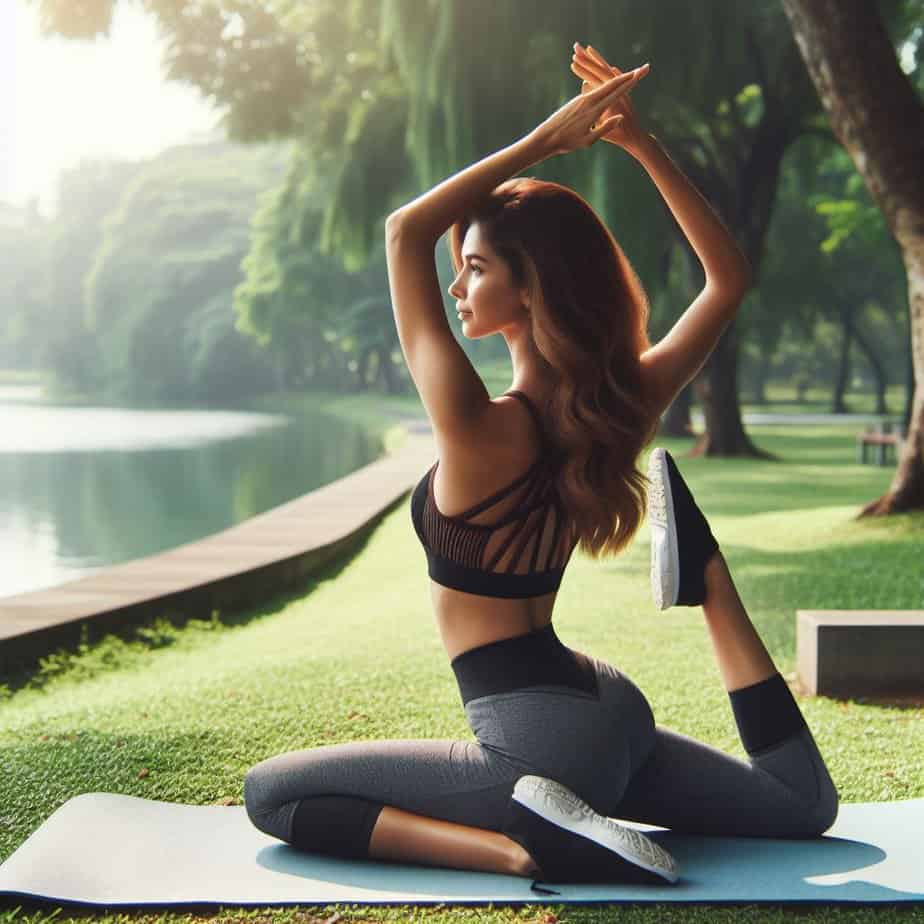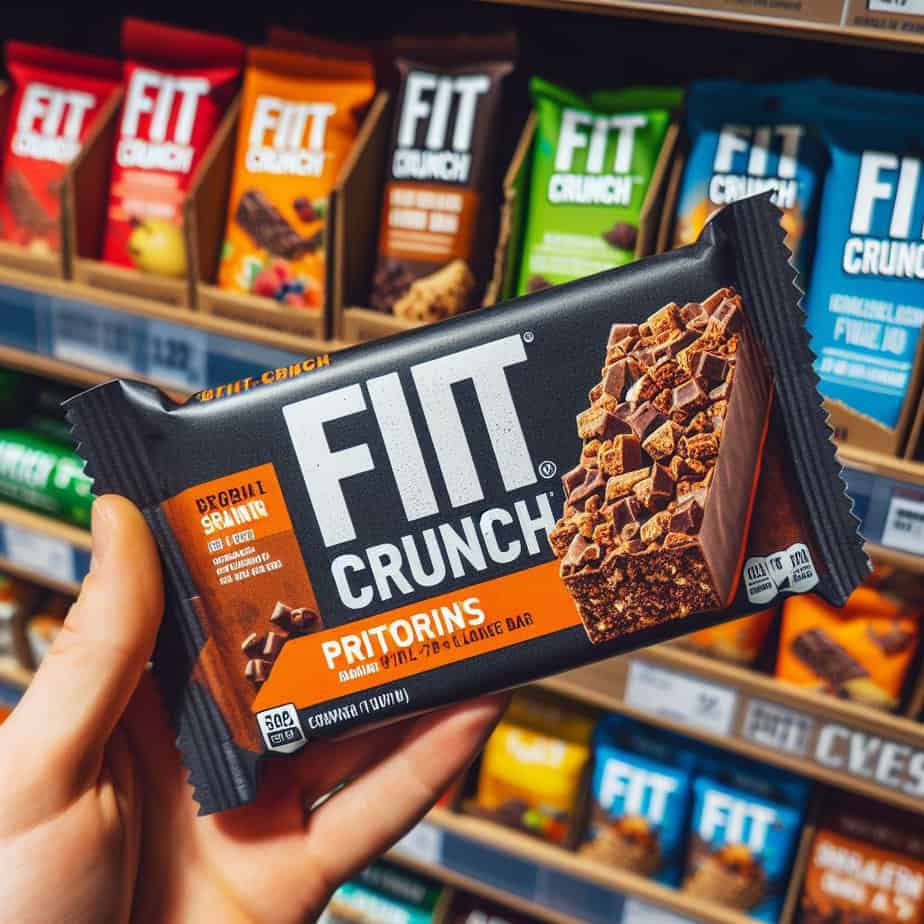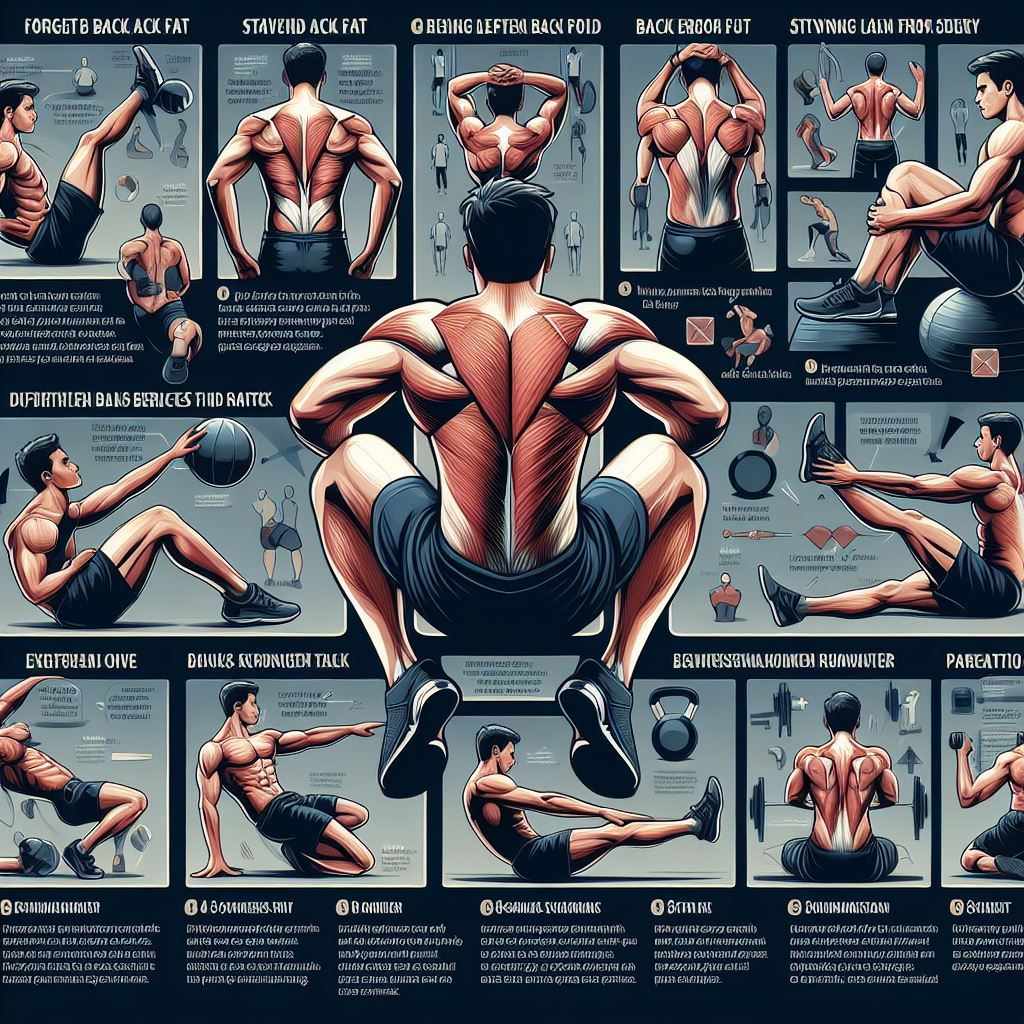40 Most Important Yoga Poses for Beginners
In this comprehensive guide, we delve into the 40 most crucial yoga poses for beginners. Each pose serves as a stepping stone, guiding you through the foundational aspects of yoga while laying a solid groundwork for your practice.
From the iconic Downward Facing Dog that stretches the entire body to the serene Corpse Pose that facilitates ultimate relaxation, this collection encompasses a diverse range of postures. You’ll discover poses that strengthen, poses that stretch, and poses that soothe. Alongside the physical postures, we’ll explore the philosophy and mindset essential for a fulfilling yoga journey.
Whether you’re seeking improved flexibility, strength, stress relief, or simply a deeper connection with yourself, these poses are your gateway to the transformative world of yoga. Embrace the process with patience and curiosity, honoring your body’s unique needs and limitations along the way. Let this guide be your companion as you embark on this enriching path of self-discovery and holistic well-being.
Key Takeaways:
- Foundational Poses: Start with basic poses like Downward Facing Dog and Mountain Pose to establish strength and flexibility.
- Building Blocks: Warrior poses strengthen and energize while promoting courage and stability.
- Stretches and Relaxation: Explore stretches like Triangle Pose and Seated Forward Bend for flexibility and relaxation.
- FAQs: Address common questions on frequency, duration, attire, and modifications for injuries, promoting a safe and enjoyable practice.
1. Downward Facing Dog (Adho Mukha Svanasana)
The Downward Facing Dog is a foundational pose that stretches the entire body. It strengthens the arms, shoulders, and legs while promoting relaxation.
2. Mountain Pose (Tadasana)
Tadasana, or Mountain Pose, establishes a strong foundation for other standing poses. It improves posture, balance, and focus.
3.Warrior I (Virabhadrasana I)**
Warrior I energizes the legs, opens the chest, and builds strength. It symbolizes courage and determination.
4. Warrior II (Virabhadrasana II)
Warrior II enhances flexibility in the hips and strengthens the legs. It encourages stability and concentration.
5. Extended Side Angle (Utthita Parvakonasana)
This pose stretches the side body, improves lung capacity, and engages the core. It’s excellent for building stamina.
6. Triangle Pose (Utthita Trikonasana)
Trikonasana elongates the spine, stretches the hamstrings, and improves balance. It also stimulates digestion.
7. Standing Forward Bend (Uttanasana)
Uttanasana releases tension in the hamstrings and lower back. It encourages relaxation and mental calmness.
8. Reverse Warrior (Viparita Virabhadrasana)
Reverse Warrior opens the chest and stretches the side body. It’s a graceful pose that encourages self-reflection.
9. Garland Pose (Malasana)
Malasana strengthens the lower back, ankles, and thighs. It’s a grounding pose that aids digestion.
10. Half Forward Bend (Ardha Uttanasana)
Ardha Uttanasana lengthens the spine and prepares you for deeper forward bends. It’s great for flexibility.
…
11. Seated Wide Angle Straddle (Upavistha Konasana)
Upavistha Konasana stretches the inner thighs and groins. It’s beneficial for hip flexibility and sciatica relief.
12. Happy Baby Pose (Ananda Balasana)
Ananda Balasana opens the hips and relieves lower back tension. It’s playful and relaxing.
13. Supine Spinal Twist (Supta Matsyendrasana)
Supta Matsyendrasana detoxifies the spine and massages the abdominal organs. It promotes relaxation.
14. Child’s Pose (Balasana)
Balasana is a restorative pose that calms the nervous system. It’s perfect for relaxation between intense poses.
15. Corpse Pose (Savasana)
Savasana is the final relaxation pose. Lie down, let go of tension, and allow your body to rejuvenate.
A Word From Verywell
Remember that yoga is a journey, and these poses are stepping stones. Listen to your body, breathe deeply, and honor your practice.
Standing Yoga Poses For Beginners
If you’re just starting, focus on standing poses. They build strength, balance, and stability.
**Finding Comfort on the Ground: Exploring Seated and Supine Poses
Transitioning from standing to seated and supine postures allows for deeper stretches and relaxation. Let’s explore some comfortable and restorative asanas.
- Garland Pose (Malasana): Malasana strengthens the lower back, ankles, and thighs. It’s a grounding pose that aids digestion.
- Half Forward Bend (Ardha Uttanasana): This gentle forward bend lengthens the spine and prepares you for deeper forward bends, promoting flexibility.
Beginner Yoga Poses for 2
Partner yoga offers relaxation, stretching, and strengthening benefits for individuals who enjoy sharing their practice with others. Beginner partner yoga poses foster connection, trust, and physical well-being. Breathing and standing forward fold pose foster connection and awareness. Both pose types help build trust and enhance physical well-being.
Beginner Yoga Poses for 3
Yoga can be a shared experience, fostering connection, trust, and fun. Five simple 3-person yoga poses can help: Lotus Circle, Triangle Pose Trio, and Group Tree Pose. These poses foster unity, mindfulness, balance, and flexibility. By practicing these poses, you can enhance your yoga practice and create a beautiful shared experience.
Good Yoga Poses for Flexibility
Yoga offers a vital aspect of overall well-being, enhancing flexibility through gentle yet effective poses. These poses target various muscle groups, promoting relaxation and reducing muscle tension. Examples include the Intense Side Stretch, Pigeon Pose, Cow Face Forward Bend, Bridge Pose, and Cobra Pose. Regular practice not only increases range of motion but also promotes relaxation and reduces muscle tension. These poses help enhance posture, balance, digestion, and overall well-being.
Beginner Yoga Poses for Flexibility
A key component of overall health is flexibility, and yoga provides a gentle yet powerful means of increasing it. Frequent practice helps you relax and release tense muscles in addition to improving your range of motion. Now let’s look at some flexibility yoga poses that work different muscle groups:
Strong Side Exhalation (Parsvottanasana): You can extend your legs, hips, and spine by bending forward. It improves digestion, balance, and posture. Place one foot in front of you and the other behind you, bend at the hips, and extend your arm toward the ground
Pigeon Pose (Kapotasana): Pigeon pose extends the glutes and outer hips, opening the hips and relieving tension. Start in a lunge, step back with one leg, then bend forward over.
Beginners Yoga Stretches for Flexibility
Flexibility is a gateway to overall well-being, and yoga offers a gentle path toward achieving it. Whether you’re a beginner or an experienced yogi, these foundational stretches can enhance your flexibility and promote relaxation. Let’s explore **20 beginner-friendly yoga poses** that target different areas of the body:
1. **Shoulders**:
– **Eagle Arms Pose (Garudasana)**: Opens up the chest and shoulders.
– **Bow (Dhanurasana)**: Stretches the front of the body.
– **Bridge (Setu Bandha Sarvangasana)**: Engages the shoulders and spine.
– **Cobra (Bhujangasana)**: Strengthens the upper back.
– **Fish (Matsyasana)**: Releases tension in the neck and shoulders.
2. **Hips**:
– **Pigeon (Kapotasana)**: Deep hip opener.
– **Cow Face Forward Bend (Adho Mukha Gomukhasana)**: Stretches hips and hamstrings.
– **Wide Legged Seated Forward Fold (Upavistha Konasana)**: Lengthens inner thighs.
– **Crescent Lunge (Anjaneyasana)**: Opens the hip flexors.
– **Three Legged Dog (Eka Pada Adho Mukha Svanasana)**: Strengthens hips and legs.
3. **Hamstrings**:
– **Straight Legged Seated Forward Fold (Paschimottanasana)**: Targets hamstrings and lower back.
– **Legs-Up-the-Wall (Viparita Karani)**: Relaxes hamstrings and improves circulation.
– **Pyramid (Ardha Parsvottanasana)**: Lengthens hamstrings and calves.
– **Plow Pose (Halasana)**: Releases tension in the spine.
4. **Back**: – **Cat and Cow (Marjaiasana & Bitilasana)**: Warms up the spine. – **Camel (Ustrasana)**: Opens the chest and stretches the front body. – **Reclined Spinal Twist (Supta Matsyendrasana)**: Relieves tension in the back. – **Child’s Pose (Balasana)**: Restorative pose for the spine. – **Standing Forward Fold (Uttanasana)**: Lengthens the entire back.
Basic Yoga Stretches for Flexibility
Easy Yoga Exercises for Flexibility
Yoga poses and stretches are essential for enhancing flexibility, especially for beginners. These exercises can help improve posture, balance, and digestion. Beginners can try the Intense Side Stretch, Pigeon Pose, Cow Face Forward Bend, Wide-Legged Seated Forward Fold, Crescent Lunge, Straight-Legged Seated Forward Fold, Cat and Cow, Came Pose, Reclined Spinal Twist, Child’s Pose, and Standing Forward Fold. Focusing on the sensation rather than appearance, consistent practice will gradually improve flexibility, leading to greater well-being.
Feel free to modify and expand upon these poses as you progress in your yoga journey. Enjoy the practice! 🧘♀️🌟
Frequently Asked Questions (FAQs) for Beginner Yogis (Continued)
How often should I practice yoga?
Aim for two to three yoga classes each week as a beginning.This allows your body to adjust and recover while establishing a consistent practice. Gradually increase the frequency as you gain strength and flexibility. Whenever your body tells you to relax, do so; don’t push yourself past the point of discomfort
How long should a yoga session be for beginners?
Start with shorter sessions (15-20 minutes) and gradually extend them as you become more comfortable. Focus on proper form and technique over duration. There are many excellent beginner yoga videos and online classes available that range from 15 to 60 minutes – choose a length that fits your schedule and preferences.
What should I wear to yoga class?
Comfort is key! Put on loose-fitting apparel that doesn’t restrict your movement. The best materials are ones that wick away moisture or are breathable, like cotton.You may also want to consider practicing barefoot or with grippy socks.
Do I need a yoga mat?
A yoga mat provides cushioning and support during your practice. However, it’s not essential, especially when starting. You can use a towel or a carpeted surface. As you progress, a yoga mat can enhance your comfort and stability in certain poses.
What if I can’t touch my toes?
Many yoga poses involve bending forward. Don’t worry if you can’t touch your toes! Yoga is about your individual journey, not about achieving perfect form. Use yoga blocks or bolsters to support your body and gradually increase your flexibility over time.
Can I practice yoga if I have injuries?
Consult your doctor before starting yoga if you have any injuries or limitations. There are many yoga poses that can be modified to accommodate injuries. Be mindful of your body and communicate any limitations to your yoga instructor if you’re attending a class.
Is yoga a good workout?
Absolutely! Yoga offers a complete workout that combines strength training, flexibility exercises, and cardiovascular benefits (in some styles). It also promotes mindfulness and stress reduction, making it a well-rounded approach to fitness and well-being.
I feel sore after my yoga class. Is that normal?
Mild soreness is common, especially when you’re new to yoga. It’s a sign that your muscles are working and adapting. Gentle stretching and staying hydrated can help alleviate soreness. If the pain is severe, take a break and consult your doctor.
How can I stay motivated with my yoga practice?
Set realistic goals and celebrate your progress. Find a yoga style you enjoy and explore different instructors or online classes to keep things interesting. Practice with a friend or join a local yoga community for support and motivation. Remember, yoga is a journey, not a destination. Be patient, kind to yourself, and enjoy the process!
By incorporating these essential poses, FAQs, and tips, you’ll be well on your way to a fulfilling and transformative yoga practice. Remember, yoga is a journey of self-discovery. Embrace the exploration, listen to your body, and enjoy the incredible benefits yoga has to offer!






















Post Comment